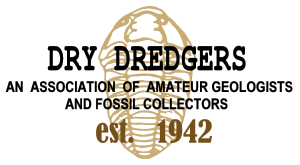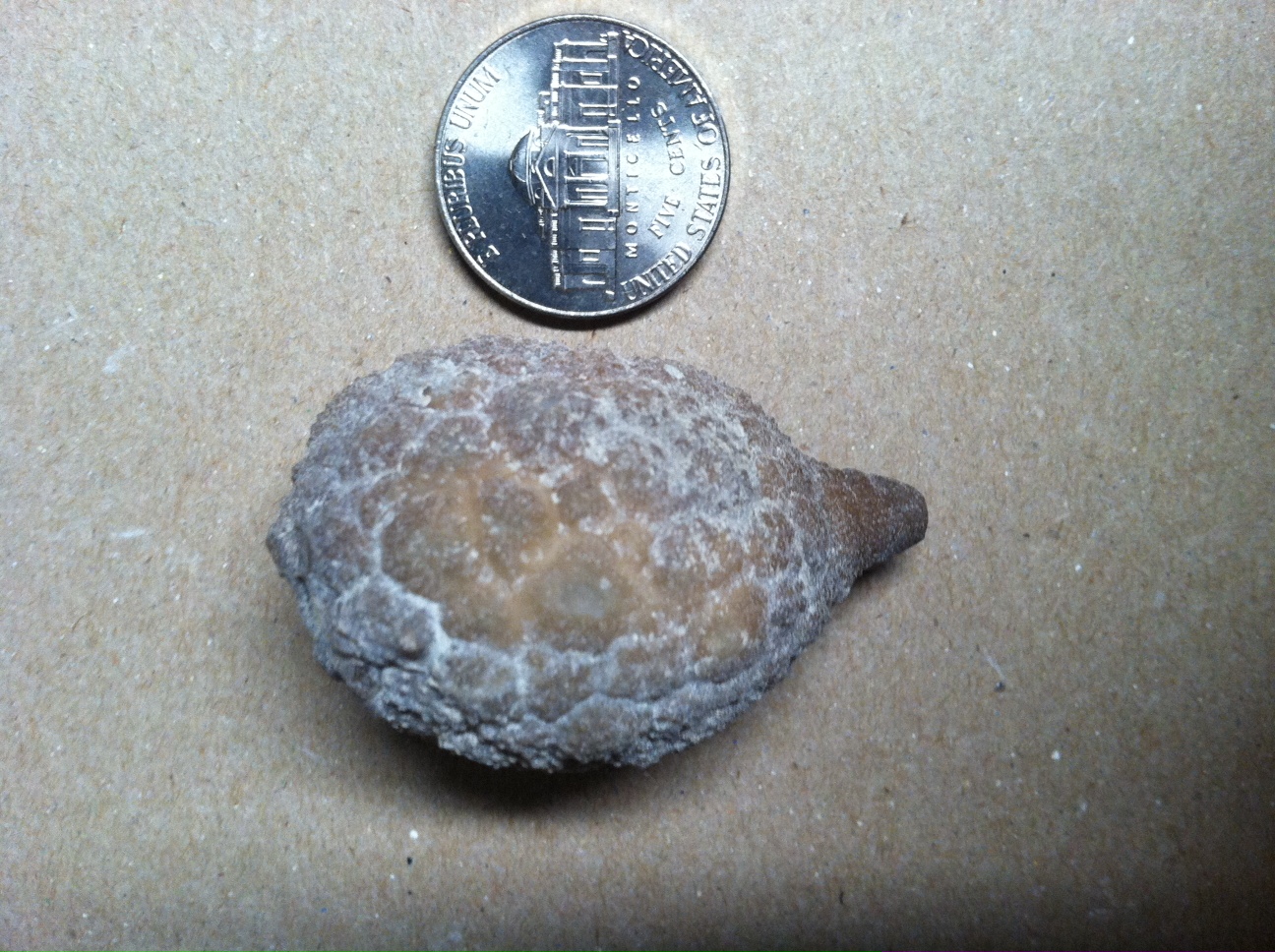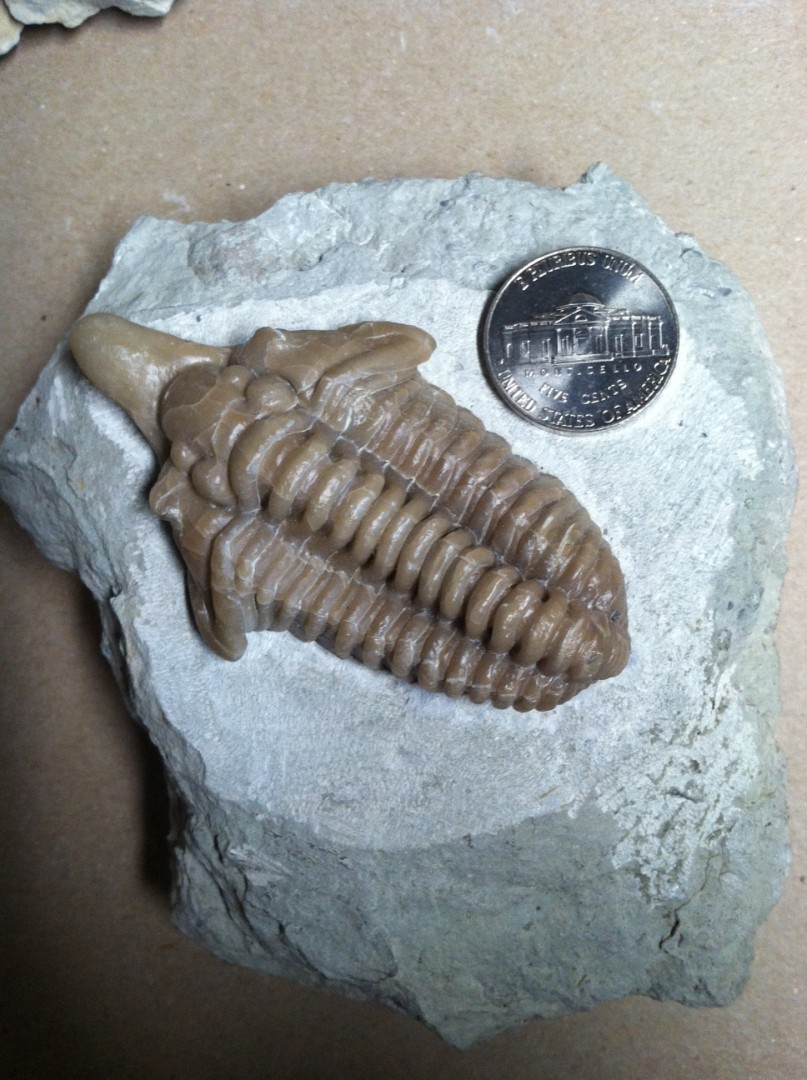I recently again returned to my all-time favorite site: the Silurian Massie Shale in Ripley County, Indiana. I’ve reported on this locality in previous Dry Dredger blogs, for example:
http://www.drydredgers.org/blog/wp/2016/04/silurian-massie-shale-field-trip/
The majority of the collectable Silurian shale is on the spoil piles. While there are no new shale exposures in the quarry and no new rock has been added to the old piles in a very long time, weathering occasionally exposes a few specimens of Holocystites — see the example picture below from my recent field trip.
I also found a nice Caryocrinites. This is not a particularly common cystoid in the Massie Shale.
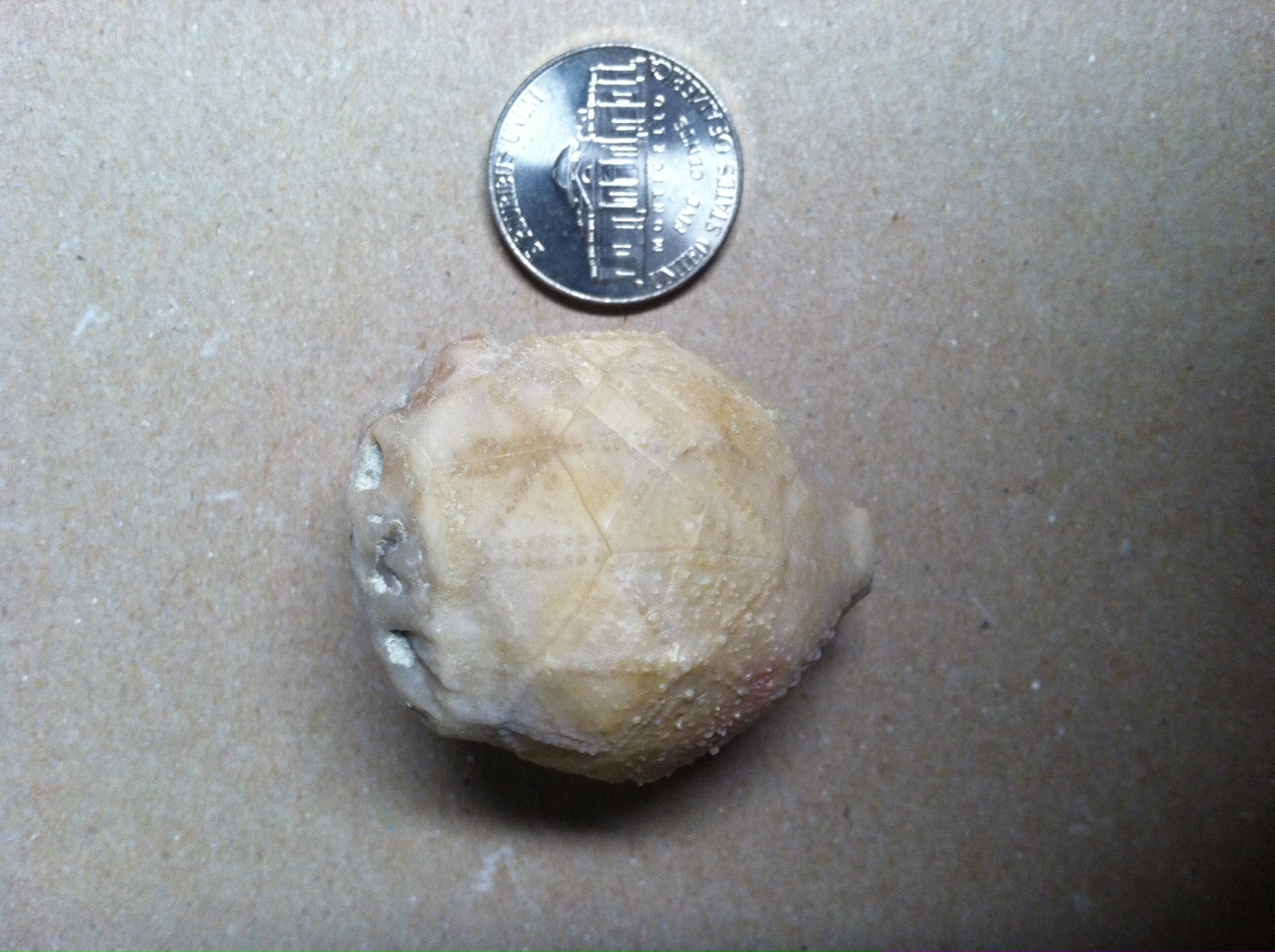
Caryocrinites after soaking overnight in RockQuat — that amazing elixir removed nearly all the adhering shale.
And I managed to find a small (approximately 1/2 inch) Spathacalymene nasuta (the rare snout-nosed trilobite) in a hard chunk of rock. As typical of the specimens found at this locality, it is ventrally exposed. And only partially at that, so a particular challenge to even spot it on the spoil pile.
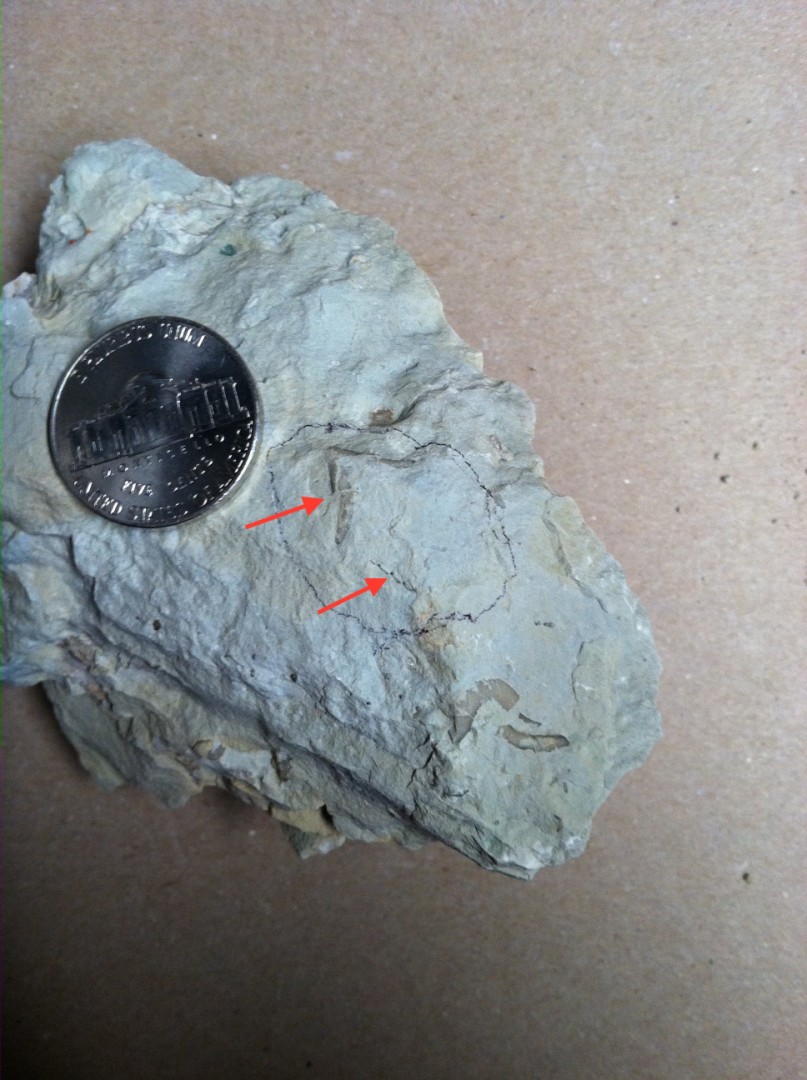
Ventrally exposed Spathacalymene nasuta. Note the red arrows: left one points to the snout and cheeks, right one points to a few exposed pleural tips. There are also some trilobite fragments in the lower right corner of the rock.
Of course, once the trilobite is prepped, I’m sure it will appear much larger. 
As I’ve stated previously, from the perspective of a fossil collector, the quarry continues to mine in the wrong direction. Based on our collecting success in the past, they should be mining toward the north and west — that’s where the “hot zone” was. But, alas, they are still going east, into an area where even finding a brachiopod can be a challenge. I will continue to monitor the quarry for any new shale exposures — because they just might uncover another section with a high concentration of Silurian macro-fossils.
Don Bissett

A long-time member of the Dry Dredgers, I’ve been collecting fossils ever since moving to Cincinnati in 1975 to work at P&G. I was introduced to fossil collecting by Bruce Gibson, another Dry Dredger and co-worker at P&G. Shortly after that, I met Dredger Dan Cooper. Both of them taught me a lot about the hobby. Ever since, I’ve been hooked on fossils.
My primary focus is collecting trilobites and echinoderms, though I often find myself accumulating a much wider assortment of fossils. Beyond the collecting hobby, I’ve also had the opportunity to work with professional paleontologists – extremely rewarding experiences. Some of those have been described in Dry Dredger Bulletin articles, MAPS (Mid-American Paleontology Society) articles, and technical publications. I plan to share more about collecting and professional interactions in my blog posts.Latest posts by Don Bissett (see all)
- Massie Shale Calymene - January 4, 2021
- Mississippian starfish - November 13, 2020
- Walcott-Rust Starfish - October 25, 2020
- Spathacalymene - September 20, 2020
- Penn Dixie Dig with the Experts 2018 - May 27, 2018

